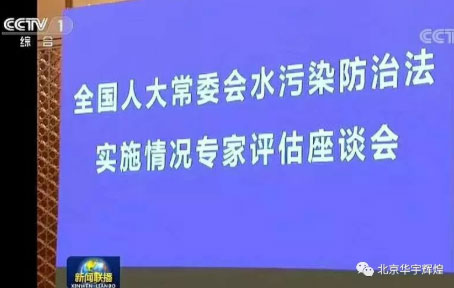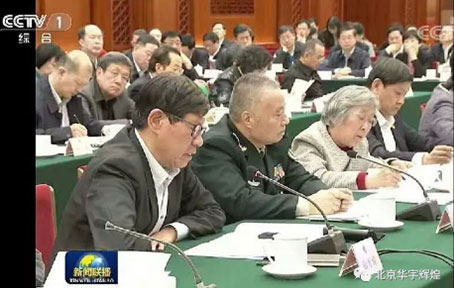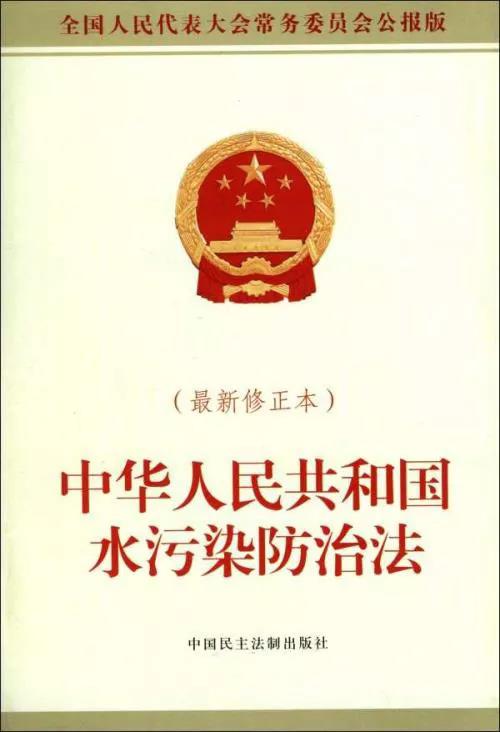NEWS CENTER
Academician Peng Yongzhen: main problems and suggestions on urban sewage treatment and discharge standards
- Categories:Industry News
- Author:
- Origin:Website of Ministry of agriculture and rural areas
- Time of issue:2019-04-03 17:24
- Views:
(Summary description)On the afternoon of March 25, the Standing Committee of the National People's Congress held an expert evaluation Forum on the implementation of the water pollution prevention and control law.
Academician Peng Yongzhen: main problems and suggestions on urban sewage treatment and discharge standards
(Summary description)On the afternoon of March 25, the Standing Committee of the National People's Congress held an expert evaluation Forum on the implementation of the water pollution prevention and control law.
- Categories:Industry News
- Author:
- Origin:Website of Ministry of agriculture and rural areas
- Time of issue:2019-04-03 17:24
- Views:
On the afternoon of March 25, the Standing Committee of the National People's Congress held an expert evaluation Forum on the implementation of the water pollution prevention and control law. Li Zhanshu, member of the Standing Committee of the Political Bureau of the CPC Central Committee and chairman of the Standing Committee of the National People's Congress, attended the meeting, listened to the introduction of the implementation of the water pollution prevention and control law, the progress of the project and experts' opinions and suggestions, and delivered a speech. CCTV news broadcast reported on the 26th.

At the beginning of this year, the environmental protection and Assets Supervision Committee of the National People's Congress commissioned the Chinese Academy of engineering to carry out the evaluation and Research on the implementation of the water pollution prevention and control law, and introduced the third-party assessment into the law enforcement inspection of the NPC Standing Committee for the first time. At the forum, academician Peng Yongzhen of Beijing University of technology delivered a speech on the evaluation of the implementation of the water pollution prevention and control law from a professional perspective.

Academician Peng Yongzhen's speech
In his speech, academician Peng Yongzhen said that in the implementation of the law on the prevention and control of water pollution, various discharge standards and norms for sewage treatment are important standards and basis for law enforcement. In recent years, water environmental pollution has been significantly improved. However, this process also exposed the problems of sewage discharge standards.
"Standard" is a universal language of the world. In the international standards of various industries, European and American countries have always occupied a monopoly position. According to statistics, the standards formulated by the European and American countries account for 93% of the total, while those of other countries only account for 7%, while China only accounts for a small share of this. It can be seen that the international standards are still relatively backward. There is a saying that "those who get the standard will win the world". Standard is an important weight to participate in international competition, but it also keeps pace with the times. Therefore, China should first improve and improve its own standards, promote the development of science and technology and economy, and take a place in the formulation of international standards in the future, and gradually improve the discourse power of international standards.

一、 Main problems and suggestions on discharge standard of urban sewage treatment
1. The discharge standard of urban sewage treatment is too "uniform" and should be planned and revised according to local conditions
China has a vast territory. The environment, climate and living habits of different regions in the East, West, North and South are very different. The quality, quantity of sewage and the environmental capacity of receiving water body are different. Taking the nitrogen and phosphorus removal of sewage as an example, the concentration of total nitrogen in urban sewage in the north and the south is very different. There is a big problem in implementing class a emission standard according to the requirement of "uniformity". In other countries, according to different water environment capacity and treatment scale, each city or even each sewage treatment plant has different discharge standards.
2. For fragile water bodies such as lakes and bays, more stringent local standards for nitrogen and phosphorus emissions should be formulated
Nitrogen and phosphorus in sewage are also known as nutrients, and their main harm is to cause eutrophication of slow flowing water bodies such as lakes and bays and abnormal propagation of algae. Therefore, the sewage treatment plants discharged into such water bodies should implement more stringent discharge standards. For example, the critical conditions for lake eutrophication are total nitrogen (TN) > 0.2mg/l and total phosphorus (TP) > 0.02mg/l. However, China's first-class a emission standard stipulates that TN should not exceed 15mg / L and TP should not exceed 0.5mg/l, which are dozens of times of the above critical values. It can be seen that even if they all meet the discharge standard of Grade A, it will still cause serious harm to this kind of water body, and it is difficult to curb the spread of eutrophication. Therefore, more stringent local discharge standards should be formulated for such fragile water bodies.
3. In view of the non eutrophication water body, it is necessary to formulate appropriate and loose nitrogen and phosphorus emission standards
For rivers, rivers and oceans that will not be eutrophicated, the discharge of nitrogen and phosphorus will not cause harm to the water body. For example, the inland water in Northeast China originates from Nenjiang River, flows into Songhua River, then flows into Heilongjiang River, which is the boundary river between China and Russia, and then passes through Russia (the sea of Okhotsk), and finally enters the open sea without Bay, so it will not be eutrophicated. Moreover, the temperature in Northeast China is low, so it is very difficult to remove nitrogen and phosphorus. Therefore, for the vast areas without the risk of eutrophication, appropriately relaxing the emission limits of nitrogen and phosphorus will not harm the water environment, but also greatly save the construction and operation costs of sewage treatment plants. (for example, the three major sewage treatment plants in Sydney, Australia, are directly discharged into the sea after primary treatment.)
二、 In recent years, more and more regions blindly put forward that urban sewage treatment should meet the high requirements of class IV and III water quality specified in the environmental quality standard for surface water, and this trend should be curbed in time
In fact, class IV water is mainly applicable to general industrial water, and class III water is mainly applicable to domestic drinking water sources. They are not sewage discharge standards. A few years ago, some first tier cities were eager to achieve success in the treatment of water environmental pollution, and blindly proposed that urban sewage treatment should meet the class IV or even class III standards in the environmental quality standard for surface water. In terms of CODCr, a comprehensive evaluation index of total oxygen consumption of organic matter in China, the limit value of class a emission standard is 50mg / L, while that of class IV and III is 30mg / L and 20mg / L respectively, which will increase the treatment cost by more than five times. What's more, the small amount of refractory organics removed for this purpose are mostly lignin, cellulose and other non-toxic organic matters, and do not increase the biochemical oxygen demand - BOD organic matter. Generally speaking, the influent of municipal wastewater treatment plant basically contains no toxic organic pollutants, so it is not necessary to meet such strict standards. As mentioned above, some areas do not even have to meet class a discharge standard. In fact, in the United States, Japan, Australia and other countries, CODcr is not used as the discharge index of urban sewage treatment, only BOD discharge standard.
The requirements of nitrogen and phosphorus for surface water quality of class IV and III are even higher. In fact, there is no sewage treatment plant in Beijing and Shanghai that can meet the above standards, and far from it. In recent years, under the advice and appeal of experts, some first tier cities gradually return to rationality, but many second tier, third tier and fourth tier cities follow up blindly. Therefore, we should strongly appeal to curb this trend of blindly putting forward excessively high sewage treatment discharge standards and keeping up with each other as soon as possible.
At present, some industrial wastewater treatment is too strict CODcr discharge standards, there are also many problems, need to be demonstrated and improved in the future.
If we say that in the international community, "those who get the standard will win the world" and those who fail to do so will lose the world; in China, there is a suspicion that "wrong standards will disturb the world". Therefore, in the future, we should pay more attention to the assessment, demonstration and constant revision and improvement of the sewage discharge standards, so as to provide more accurate scale and reliable basis for the implementation of the water pollution prevention and control law, and fundamentally control the water environment pollution.
Scan the QR code to read on your phone
Beijing Huayuhuihuang Environmental Protection Technology Co., Ltd.
Phone: 010-61379103
Address: Building 17, Internet Financial Security Demonstration Industrial Park, 1 Yanfu Road, Yancun Town, Fangshan District, Beijing
Business Cooperation: marketing@huayuhuihuang.cn
Copyright © 2020 Beijing Huayuhuihuang Environmental Protection Technology Co., Ltd.
Website building:www.xinnet.com
ICP:16014227号-3

- Follow us -
